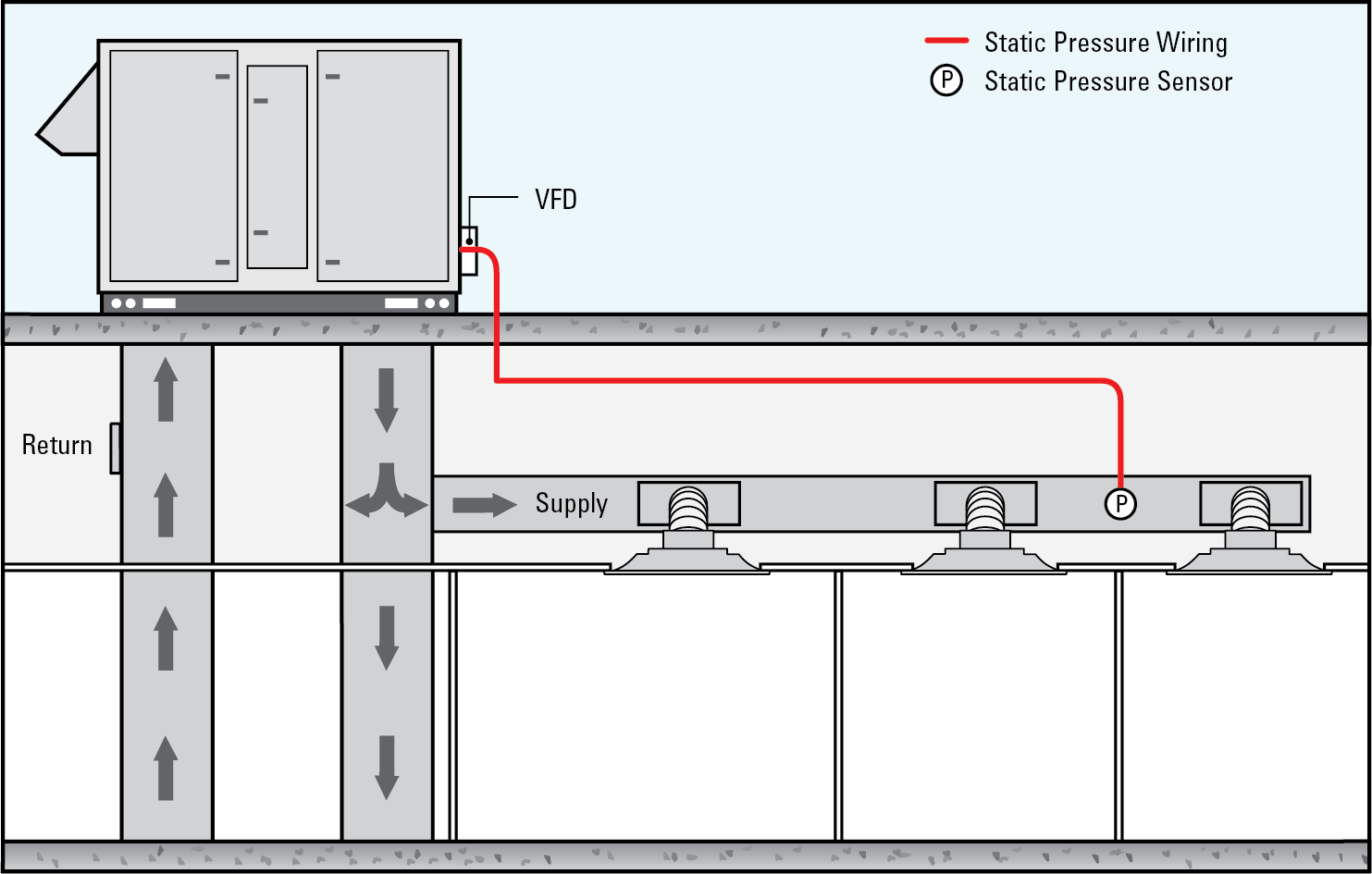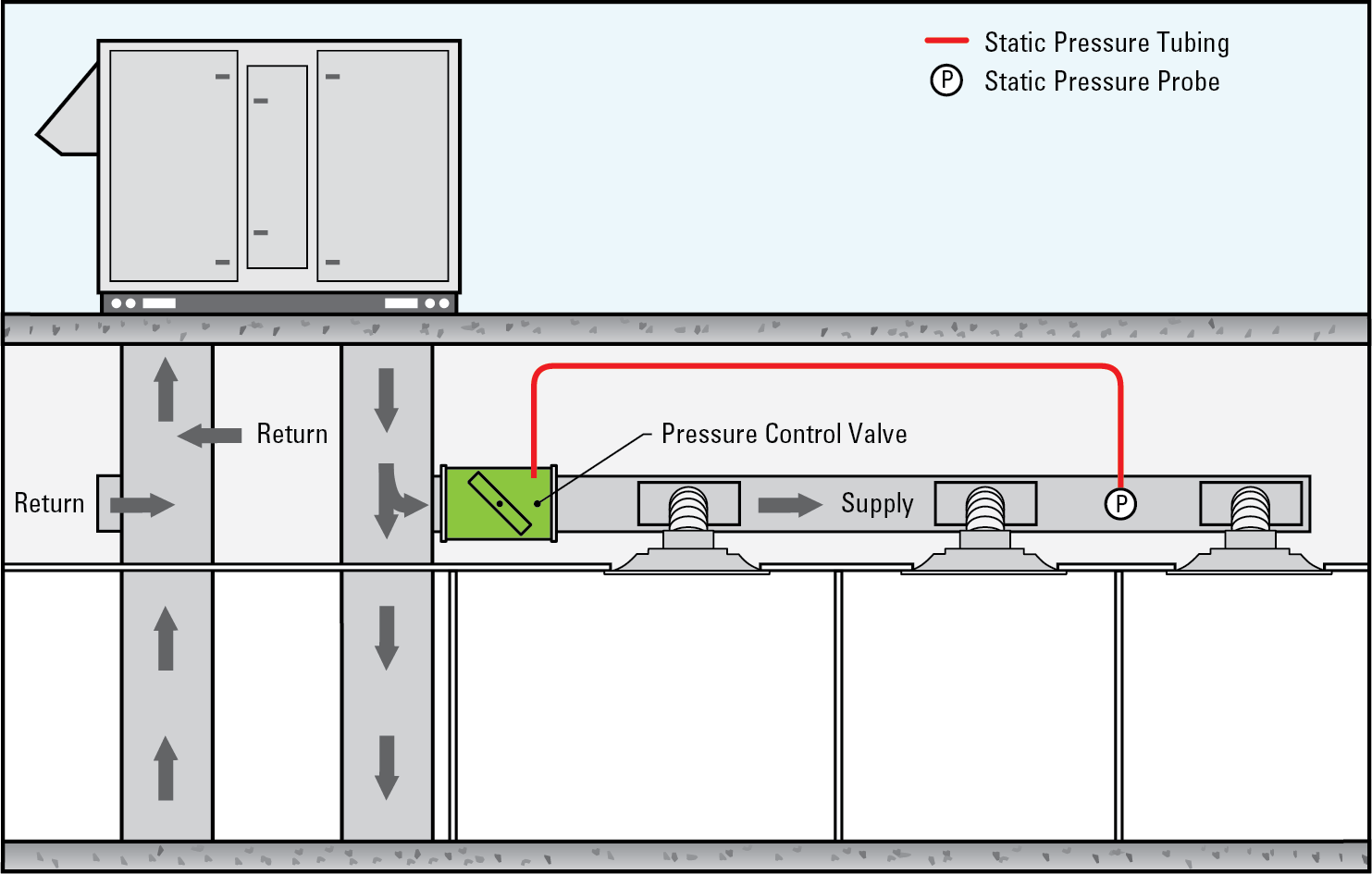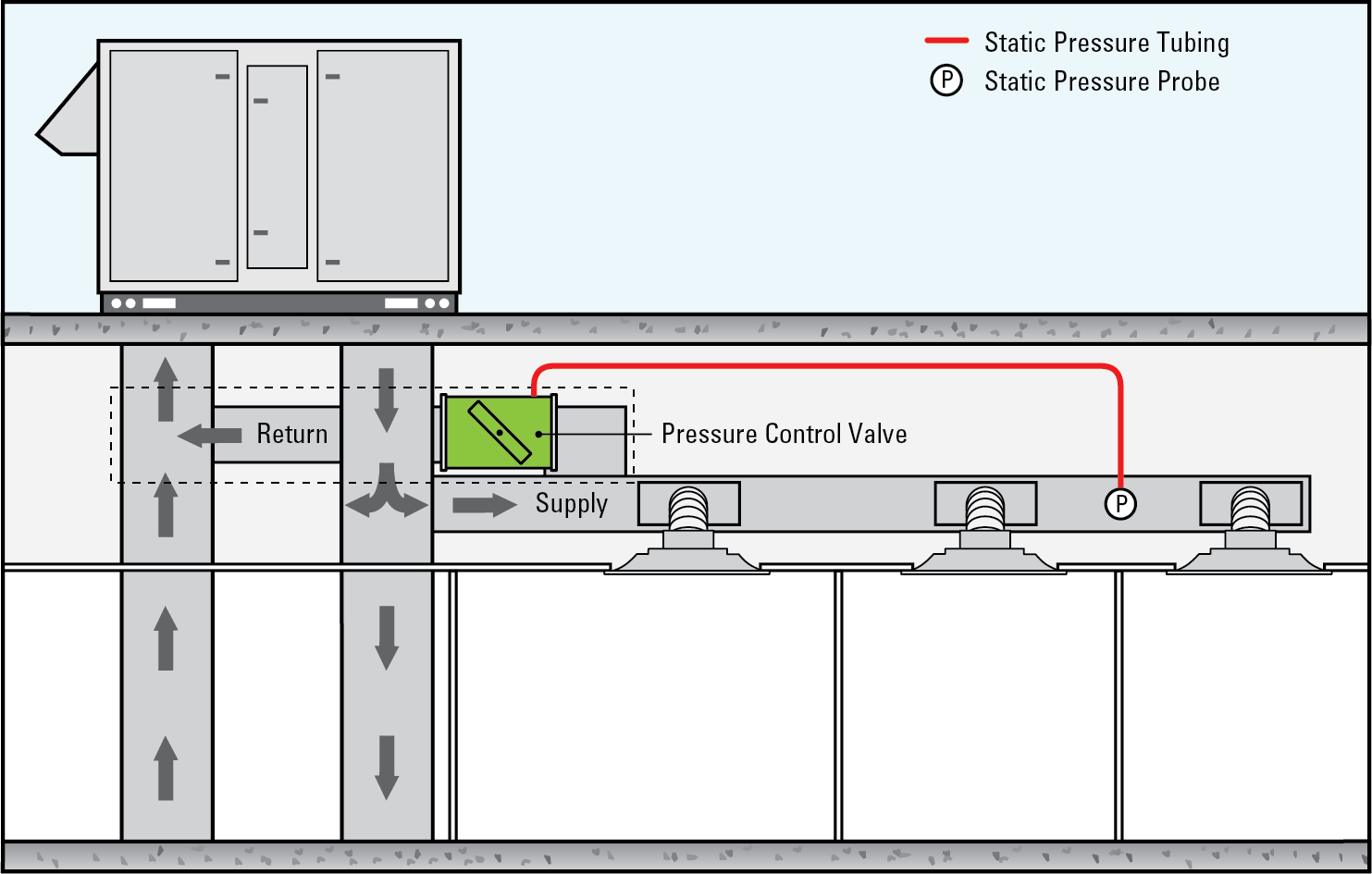Four Approaches for a Quieter System
There is a misconception that VAV diffusers are noisy, but a review of their performance data shows that they have a pressure versus noise relationship similar to that of all diffusers. The difference is that VAV diffusers have a built-in VAV damper and can close to a minimum, possibly building up pressure in the system. It is the higher pressure that makes diffusers noisy, and because of this, a method of pressure control should be used in every VAV diffuser system.

There are four basic approaches to pressure control of a system:
- 30% rule
- Fan-speed control
- Zone damper
- Bypass damper
Thirty Percent Rule
For systems where only a few VAV diffusers are being used along with many standard fixed-opening diffusers, the 30% rule may be applied. If less than 30% of the total air volume is supplied through the VAV diffusers, then when the VAV diffusers approach minimum, the pressure increase in the duct will be negligible and no additional pressure control will be required.
Fan-Speed Control
Direct fan-speed control can be employed by using a pressure controller to signal a variable frequency drive (VFD) motor. When the VAV diffusers open, the fan will speed up, and when the diffusers close to a minimum, the fan will slow down. The static pressure sensor should be located one-half to two-thirds of the way down the duct.
 |
| Equipment layout demonstrating fan-speed control |
Zone Damper
The modulating zone damper is located in-line with the diffusers, isolating the zone from the pressure in the main duct. The zone damper or pressure-control valve is connected to a static pressure sensor and will modulate with the diffuser to maintain the pressure in the zone. This method can be combined with fan-speed control for larger buildings, where the fan speed controls the pressure in the main duct. The static pressure sensor should be located one-half to two-thirds of the way down the duct.
 |
| Equipment layout demonstrating a modulating zone damper |
Bypass Damper
Systems with constant-volume fans must use a bypass to maintain constant flow over the coil while limiting duct static pressure to acceptable levels. Reduced airflow over a direct expansion (DX) coil can potentially cause the DX coil to freeze; however, a duct-mounted thermostat on the discharge from the unit will shut off the compressor when the air temperature is too cold and will prevent freezing of the coil.
The modulating bypass damper or pressure-control valve is connected to a static pressure sensor, which will actuate the valve when duct system pressure becomes too high. In this method, excess air will be bypassed into the return, thereby reducing the static pressure.
 |
| Equipment layout demonstrating a ducted bypass damper |
Using pressure-relief collars is a simple mechanical method of controlling system static pressure unique to VAV diffusers. A ceiling plenum (non-ducted) return is required as excess air is bypassed into the plenum, averting any increase in pressure at the diffuser. This method is common with retrofit VAV diffuser applications, as installation is simple and does not require extensive system modification.
 |
| Equipment layout demonstrating pressure-relief collars |
To learn more about pressure-control strategies for VAV diffusers, check out the Price Engineer’s HVAC Handbook. And for more information about our line of VAV diffusers and how you can use them in your next project, visit our website or email us at vavdiffusers@priceindustries.com.



